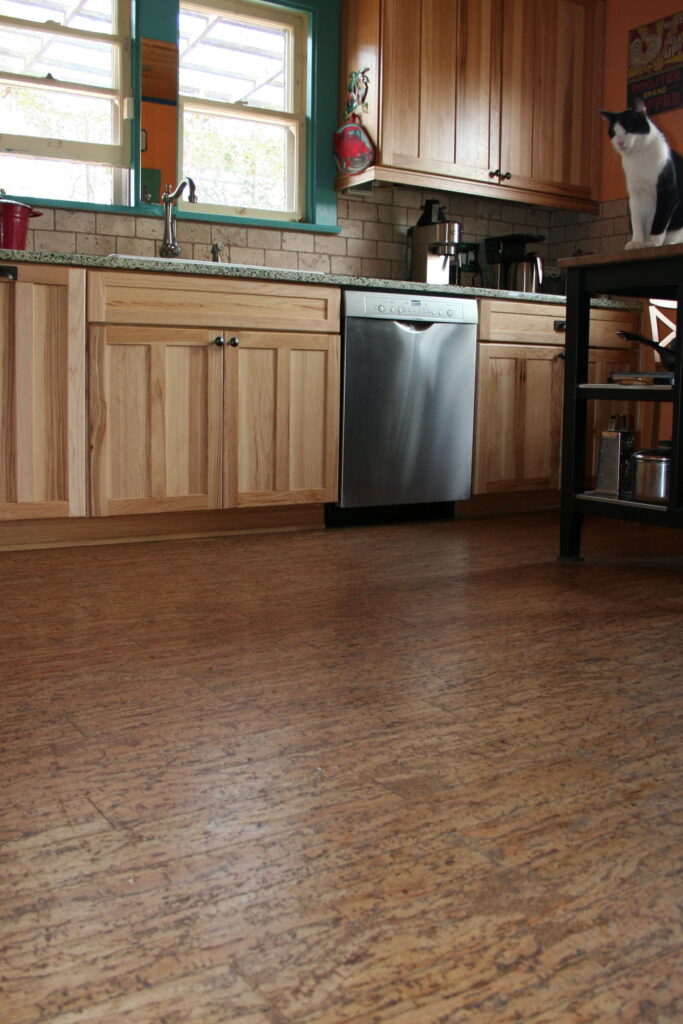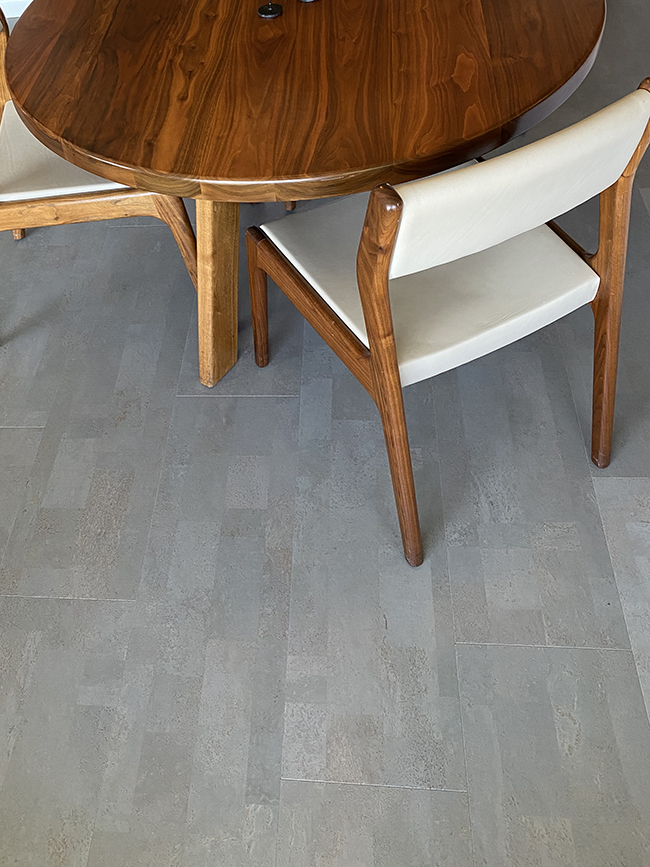
Is cork flooring right for your home?
January 3, 2023
Cork flooring can be a beautiful addition to your home. It is eco-friendly, easy to maintain, and has a great modern look. Let’s go over the details of cork flooring to help you decide if it is the right choice for you.

If eco-friendly is a priority for you then cork is a great choice. Cork flooring comes from the bark of the cork oak tree. Only the bark is harvested, which allows the trees to grow to be hundreds of years old. Then the bark re-grows in 9-12 years and can be re-harvested creating a sustainable source. Almost all of the cork comes from Portugal and Southern Spain.
The two main types of cork flooring are floating planks and glue-down tiles.
- The floating planks click together with an integral fastening mechanism or adhesive, making it a good choice for DIY installation. It is also a great choice if you are going over an asbestos tile floor and don’t want to disturb or remove it. Floating planks are made with 3 layers, the top layer is an agglomerated cork (Agglomerated cork is made by grinding up off-cuts of natural cork bark to form granules and then gluing the granules back together to form blocks.) or solid cork veneer, the middle layer is either high-density fiberboard (HDF) or medium-density fiberboard (MDF) and the bottom layer is an agglomerated cork substrate which serves as an underlayment.
- The glue-down tiles are either solid cork or agglomerated cork and come in 4.8mm and 8mm thicknesses. Glue-down tile installation requires a perfectly flat subfloor and a quick-setting adhesive. Although this style is a more difficult DIY there are several videos from flooring companies to guide a homeowner. Both types can easily be installed by a professional.
Cork flooring can easily last for 40-50 years if properly maintained. Cleaning cork flooring is simple. Sweep or vacuum debris up often to prevent grit from scratching the surface. Weekly cleaning with just a damp mop or an oil-free wood-floor cleaner (such as Bona) will clean away spills or dirt on the floor. A damp terry cloth mop works well too. Don’t pour water on the floor like in the old movies. Large amounts of water on cork flooring can cause damage.
- What is a large amount of water? When the dishwasher breaks down and floods the floor. An incident like this would likely damage any kind of flooring. When large amounts of water flood across the floor, the core can swell. A glass of water spilled on the floor is not a problem for cork. Just clean up spills soon after they happen. There is a product called Click Seal that can be applied to the core at installation and this can help prevent swelling if a leak does occur.
An advantage of cork floors is that their textured patterns help hide spills and stains in high-use rooms like kitchens. Also good for a kitchen, the cork consists of air cells, creating a cushioned comfortable surface to stand on. It also helps cushion things that might normally break when they fall from a countertop.


Some concerns with cork floors:
- The nature of this cushioned give can mean extra precautions to keep the floor in top condition. Very heavy appliances or furniture can cause permanent divots in cork. Use furniture coasters or protective pads underneath heavy or sharp furniture legs.
- Dogs and cats running across cork flooring, especially repetitively, can cause scratches. To help prevent this, it may be a good idea to keep the pet’s nails trimmed.
- If the floor starts to show signs of wear it can be recoated with a water-based floor finish (such as Bona or Vermont Naturals) to bring back the luster.
- Fading is another factor to be considered. UV light and sunlight can cause color variations to occur. If you have a large sliding door that the sun shines through in the same spot every day, the cork flooring in that area could fade. This is normal and not a manufacturer’s defect. Blocking sunlight with curtains, blinds, or UV window film can prevent fading.
Typical warranty options: The manufacturer does provide a warranty ranging from 10 years to a lifetime depending on which level of cork flooring you choose.
- Entry-level cork has fewer coats of finish and an MDF core.
- Premium cork has more coats of finish and an HDF core.
Cost is always an essential factor in choosing any upgrade to your home.
- Pricing for cork flooring ranges from $5 – $11 per square foot.
- Professional installation adds $3.50-$6 per square foot for either a floating floor or a glue-down floor. (Prices based on Tucson, AZ.)
- Don’t forget to factor in shipping costs.
Cork flooring is comfortable, economical, and easily maintained. Above are just a few things to consider when deciding if cork flooring is the right choice for your home.
